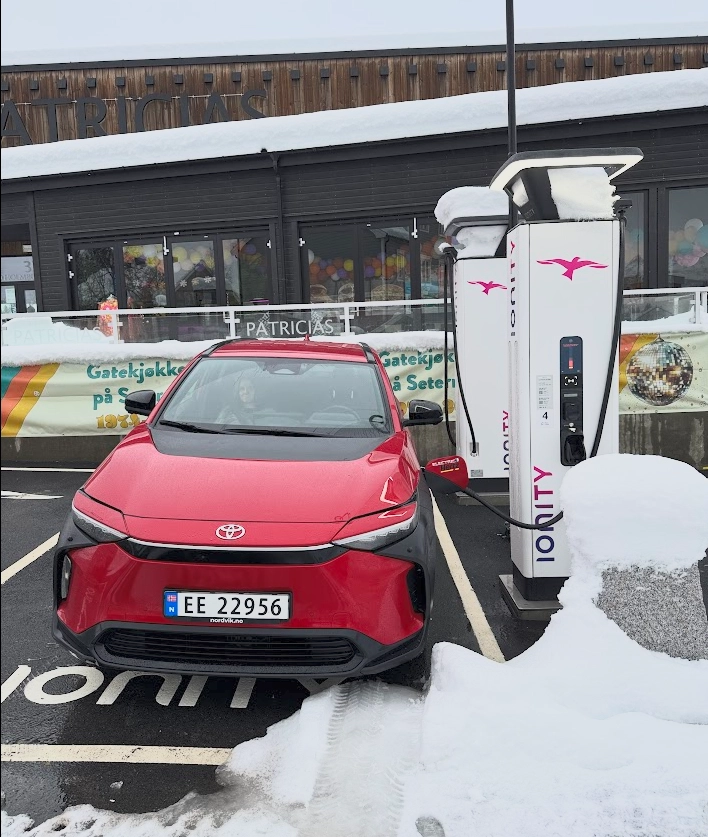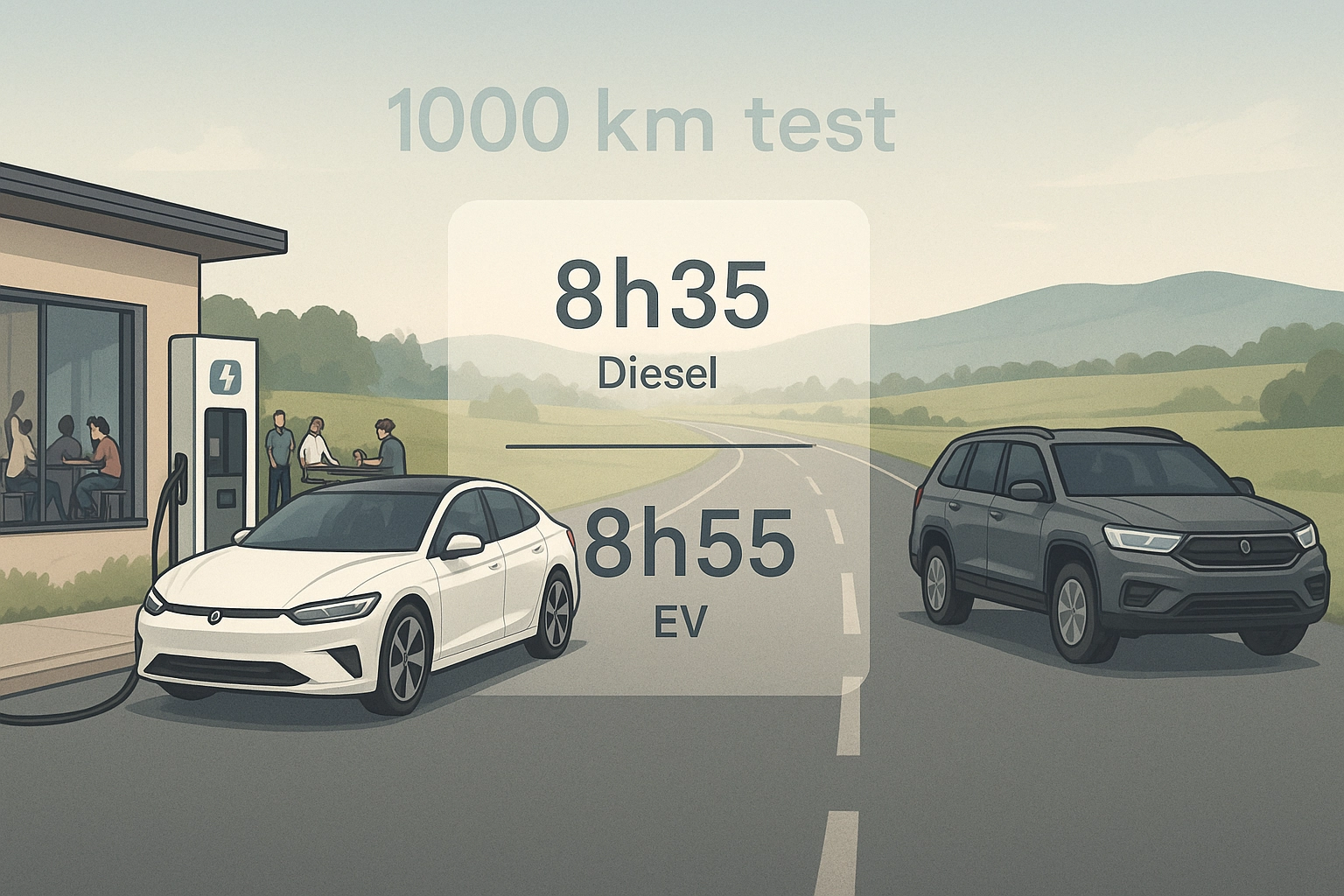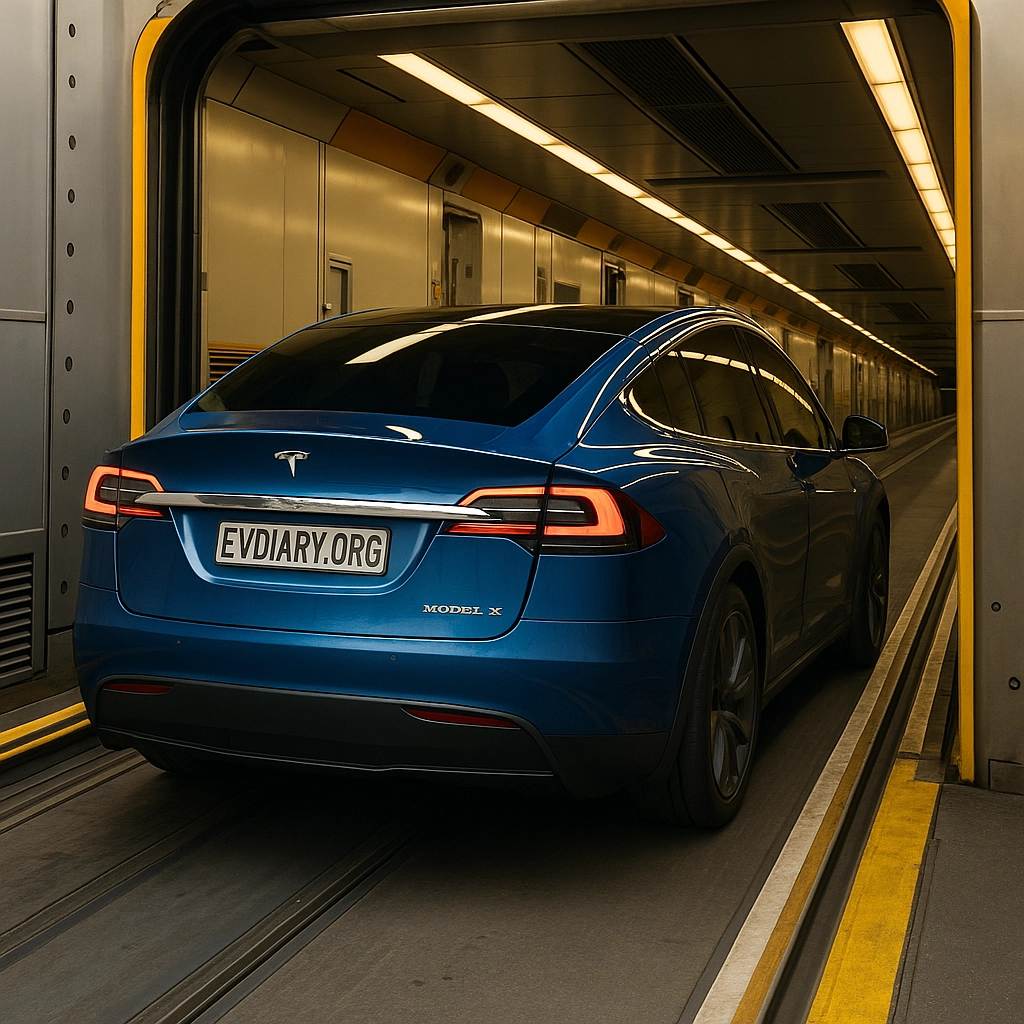“I’m considering an EV, but it has to go at least 1000 km on a charge before I’ll switch.”
Sound familiar? Maybe you’ve said it yourself. But is that a reasonable demand—or are we clinging to outdated habits and expectations?
What Do We Actually Use Our Range For?
A diesel car with 1000 km of range is impressive—but how often do you actually drive that far in one go without stopping? For most people, daily driving includes short trips to work, school, the store, and leisure activities. And yet, many let that one long trip a year dictate what car they drive.
That single long-distance journey—where you might exceed the range of an EV—gets to decide everything, even though your everyday needs could easily be covered by charging once a week. It shows the difference between the needs we think we have and those we actually do.

Most EVs today offer more than enough range for everyday use. A car with 400–500 km of range easily covers over 90% of typical driving without needing to charge en route. And when it comes to longer journeys, the fast-charging network is constantly expanding—and your car can charge while you enjoy a coffee break.
Real-World Data: The 1000 km Challenge
See the full dataset here: Bjørn Nyland's 1000 km test spreadsheet
One person who has documented this extensively is Bjørn Nyland—also known as “TeslaBjørn.” He is a Norwegian EV enthusiast and YouTuber who has tested 183 different vehicles on a fixed 1000 km challenge route. His tests include total travel time with charging stops and provide a real-world benchmark for EV performance.
As a baseline, he used two non-electric vehicles: a Nissan X-Trail diesel and a Toyota Mirai hydrogen car. The diesel vehicle set the standard with a time of 8 hours and 35 minutes. The best-performing EV so far, a Tesla Model S Long Range, completed the same distance in just 8 hours and 55 minutes—only 20 minutes slower. By comparison, 52 electric vehicles completed the full 1000 km in 10 hours or less. That means 28.4% of tested EVs are on par with—or very close to—the diesel benchmark. And this number keeps growing as new models are introduced.
With 52 different EV models having passed the test, there is now a wide variety to choose from—across price points, sizes, and brands.
Is a total of 1.5 hours of charging pause really that much when driving 1000 km? In Nyland’s comparison, this is the extra time that 28.4% of EVs need compared to the diesel reference—and they still complete the journey efficiently. For context, truck drivers are required to take a 45-minute break after 4.5 hours of driving—primarily for safety. Perhaps EV charging stops are not just necessary for the vehicle, but beneficial for the driver as well. A natural opportunity to stretch, eat, and recharge.
A New Way of Thinking
Demanding 1000 km of EV range is like expecting your phone battery to last an entire week. It’s convenient—but is it necessary? EVs are typically charged at home, not at a station. That means you start every day with a full “tank.” It’s a completely different way of operating.
On top of that, EVs are more efficient. They consume less energy per kilometer, and charging is often significantly cheaper than fuel. For many, it’s not just easier and cleaner—it’s more affordable.
What’s the Cost of Extra Range?
More range means a bigger battery. And a bigger battery means a higher price, more weight, and greater environmental impact during production. To meet the “range demand,” we may end up with more expensive, over-engineered vehicles—and unused capacity.
It’s like insisting everyone should own a 12-seat minibus, just in case you take your extended family to the cabin once a year.
Safety, Comfort—or Just Habit?
Fast- and ultra-fast chargers are now available in more places than ever. Grocery stores, restaurants, and highway stops have started offering charging to attract customers. In just a few years, charging infrastructure will be so widespread that it will be hard to stop anywhere without seeing a charger.

Plugging in takes just 20–30 seconds—and if you’re stopping anyway, that small action helps blur the line between EVs and combustion cars. Charging becomes just another part of the break—not a burden.
Behind the demand for long range often lies a desire for security. That’s understandable. We want to know we’ll reach our destination. But maybe it’s also about breaking old habits—and learning a new way to travel.
Owning an EV requires a bit more planning for long trips, but it also means less hassle in everyday life. And the more people who make the switch, the better the infrastructure gets. Chargers follow traffic—and traffic follows chargers. It’s a positive feedback loop.
Are We Ready to Let Go?
Maybe this isn’t really about range—it’s about mindset. About having the courage to ask: What do I actually need, and what have I just gotten used to?
An EV doesn’t have to beat a diesel on every metric to be the better choice overall. If we wait for perfection, we risk missing out on solutions that are already more than good enough—for ourselves and for the planet.
Translations: Norsk
.png)




Comments